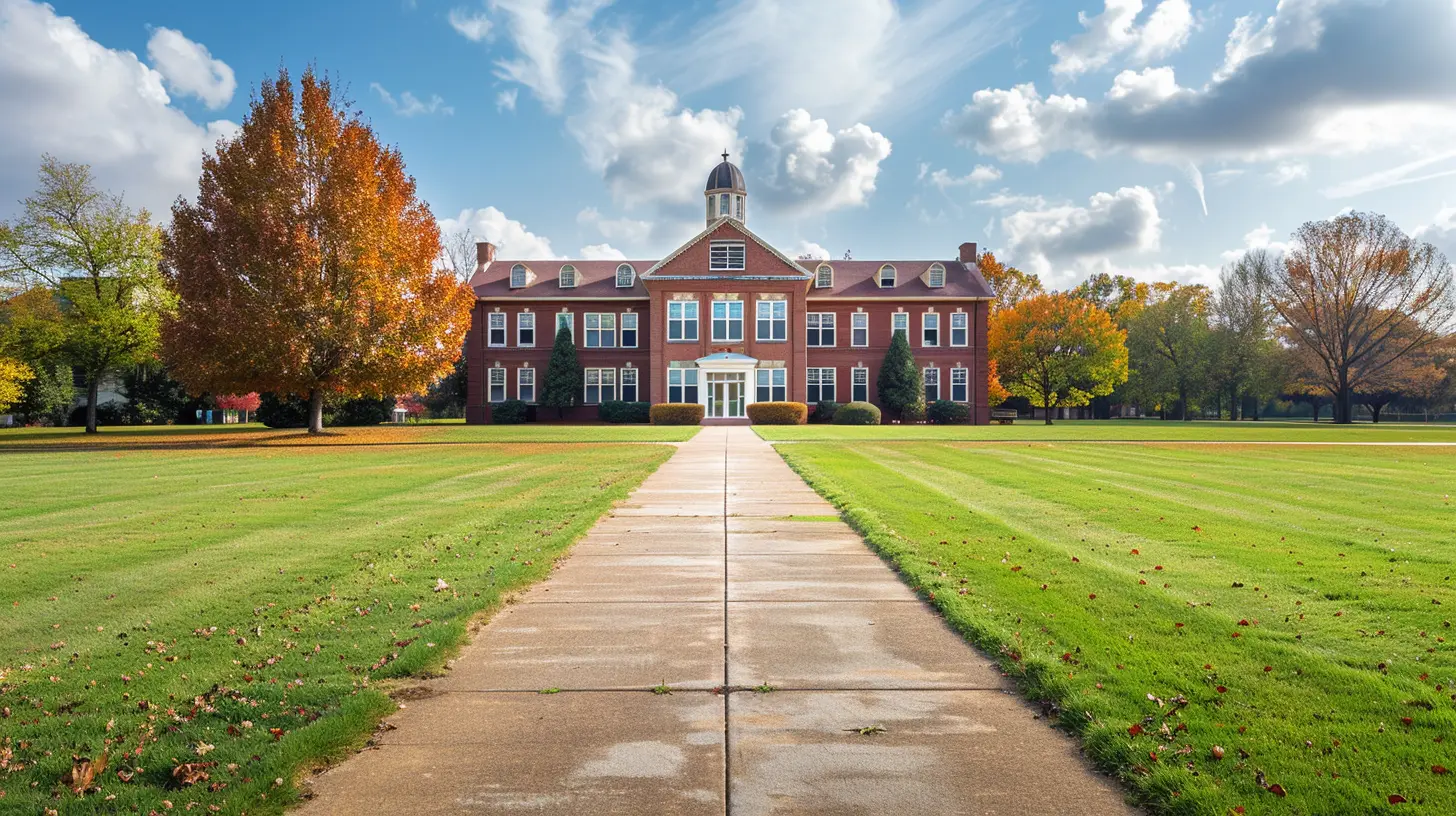Property Taxes and School Funding: A Critical Look
11 July 2025
When discussing education funding, one major player often comes up: property taxes. For many communities, property taxes serve as the backbone of public school funding. But is this system fair? Does it truly provide equal opportunities for all students?
In this article, we'll take a critical yet supportive look at how property taxes impact school funding, the pros and cons of this system, and whether there’s a better way to ensure every child gets the education they deserve. 
How Property Taxes Fund Schools
Before diving into the complexities, let's break down how this system works.Understanding the Connection
In most of the U.S., public schools receive funding from three main sources:1. Local funding (mostly from property taxes)
2. State funding
3. Federal funding
Of these, local property taxes usually contribute the biggest chunk. Here's how it works: homeowners and property owners pay taxes based on the value of their real estate. That tax revenue is then funneled into local services—including public schools.
The logic seems simple, right? The more valuable the properties in an area, the more money schools receive. But here's where the issue arises: property values vary dramatically from one community to another.
The Wealth Gap in School Funding
Imagine two school districts side by side:- District A is a wealthy suburban area with high property values. Their tax revenue is sky-high, which means well-funded schools with top-notch facilities.
- District B is in a lower-income neighborhood with lower property values. Their schools may struggle to afford basic supplies, let alone advanced technology or extracurricular programs.
This imbalance raises an important question: Should a child's education quality depend on their zip code? 
The Pros of Using Property Taxes for School Funding
Despite its flaws, the property tax-funded model does have some upsides. Let's explore why some people support it.1. Stable and Reliable Funding
Property taxes provide a steady revenue stream since property values change gradually over time. Unlike other funding sources that might fluctuate with state budgets or political decisions, schools can count on this income year after year.2. Local Control Over Education
Since property taxes are managed at the local level, communities have more control over how their schools are funded and operated. Parents and residents can vote on school budgets, approve bonds for improvements, and advocate for better resources.3. Encourages Investment in Communities
In areas where schools are well-funded, there's a positive cycle: good schools attract families, which boosts property values, which in turn increases school funding even more. This system often benefits communities where educational investment is a priority.
The Cons of Using Property Taxes for School Funding
While the system has advantages, it's far from perfect. Here’s why critics argue that relying on property taxes is problematic.1. Education Inequality
One of the biggest downsides is the stark inequality between school districts. Wealthier areas can provide their students with better teachers, modern facilities, and more extracurricular activities, while lower-income districts struggle to keep up.This creates a cycle of disadvantage: children from low-income areas often attend underfunded schools, which can limit their future opportunities.
2. Economic Disparities Increase Over Time
The rich get richer, and the poor get poorer—this phrase perfectly describes property tax-based school funding. High-value communities continue to thrive, while struggling areas fall further behind. Over time, this deepens economic and racial disparities in education.3. Property Value Fluctuations Can Hurt Schools
Even though property taxes are generally stable, unexpected events—economic downturns, housing market crashes, or local industry closures—can cause property values to drop, reducing school funding. This instability puts schools at risk during economic trouble.4. Burden on Homeowners
Homeowners bear the burden of property taxes, which can be challenging, especially for those in fixed-income situations, such as retirees. This pressure can cause tension between wanting to fund schools and managing personal finances.
Possible Solutions to Improve School Funding
So, if property taxes create funding gaps, what’s the alternative? Experts have proposed several ideas to make school funding more fair and effective.1. Increase State and Federal Funding
One potential fix is shifting more responsibility to state and federal governments. By increasing their contributions, we could reduce reliance on local property taxes and even out funding between districts.2. Implement a Funding Floor
Some states have tried leveling the playing field by setting a minimum funding level for every district. In this system, the government provides additional funds to schools in low-income areas to help ensure they have at least a baseline level of support.3. Reallocate Taxes Based on Need
Instead of keeping property tax revenue strictly local, another idea is to pool tax revenues regionally or statewide and redistribute them based on student needs. This could help bridge the funding gap between wealthy and low-income schools.4. Encourage Alternative Revenue Sources
Some communities have looked beyond property taxes, using sales taxes, corporate contributions, or lottery funds to supplement school budgets. While these solutions aren’t perfect, they at least help diversify funding sources.The Bottom Line: Is There a Better Way?
When it comes to funding schools, there's no one-size-fits-all answer. Property taxes provide stability, but they also reinforce inequalities that can limit opportunities for students in underfunded districts.So, should we scrap the system entirely? Not necessarily—but it does need reform. A more balanced mix of property taxes, state funding, and alternative revenue sources could create a more equitable education system where every child, regardless of where they live, gets access to quality learning.
At the end of the day, school funding isn’t just about numbers—it’s about investing in the future of our children and our communities. That’s something worth fighting for, don’t you think?
all images in this post were generated using AI tools
Category:
School FundingAuthor:

Madeleine Newton
Discussion
rate this article
1 comments
Camille McCarty
This article provides valuable insights into the complex relationship between property taxes and school funding. A timely and important discussion for all stakeholders.
July 24, 2025 at 4:54 AM

Madeleine Newton
Thank you for your feedback! I'm glad you found the article valuable and timely. Your insight is appreciated!


